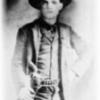
Dying Or Coloring Roughout / Flesh Side
By
Go2Tex, in Dyes, Antiques, Stains, Glues, Waxes, Finishes and Conditioners.

By
Go2Tex, in Dyes, Antiques, Stains, Glues, Waxes, Finishes and Conditioners.